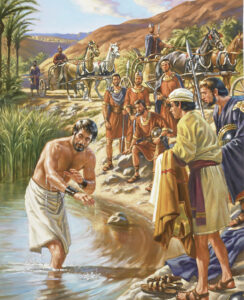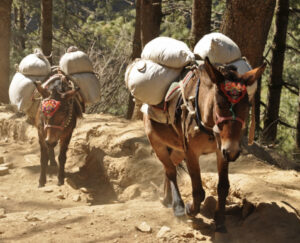Two fun things in Monday’s Old Testament readings, 1) Naaman’s skin is restored like that of a little child; and 2) he takes a load of dirt back to Syria.
A reading from the second Book of Kings 5:14-17:
“Naaman went down and plunged into the Jordan seven times at the word of Elisha, the man of God. His flesh became again like the flesh of a little child, and he was clean of his leprosy.
Naaman returned with his whole retinue to the man of God. On his arrival he stood before Elisha and said, “Now I know that there is no God in all the earth, except in Israel. Please accept a gift from your servant.”
Elisha replied, “As the Lord lives whom I serve, I will not take it”; and despite Naaman’s urging, he still refused.
Naaman said: “If you will not accept, please let me, your servant, have two mule-loads of earth, for I will no longer offer holocaust or sacrifice to any other god except to the Lord.”
The word of the Lord.

-
Save
It is the way we become born again—water and Spirit—and when we’re born again we’re like a newborn child. That’s why this dipping in the Jordan River is a prefiguring of water baptism. That’s why it’s interesting. Naaman’s flesh became like that of a newborn baby because it pictures the new birth we receive in water baptism that will come with the New Covenant.

-
Save
From this point on, Naaman will spread that dirt out where he worships, and he will stand on the holy ground of the Lord to worship. YHWH is the only God of all the earth and on his earth Naaman will worship.
One of the interesting first mentions of “holy ground”. Also it can be seen as a precursor to holy relics.


